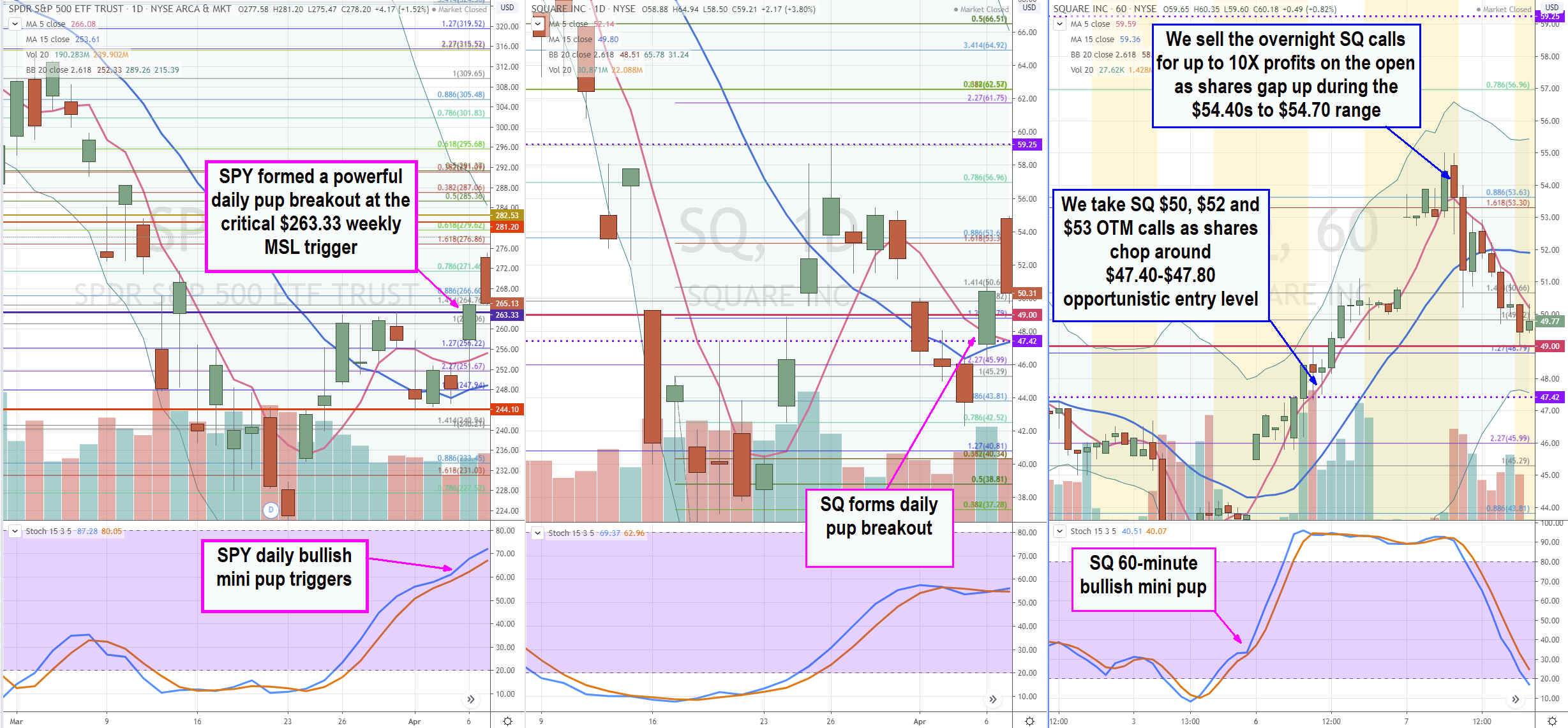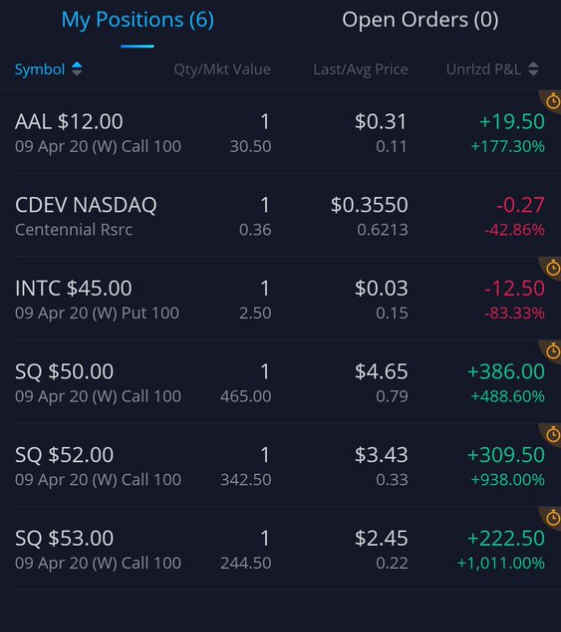The popularity of options trading continues to flourish, especially in these volatile markets, as traders get enticed to big gains on relatively small cash bets. Unfortunately, many traders put the cart in front of the horse and delve into options first without building a foundation of skillsets interpreting the underlying stock price action. It reminds me of the iceberg theory where most only see the top of the iceberg floating above the water, completely oblivious to the 80% of the structure beneath the surface. That foundation is what makes the 20% piercing above water possible. In trading, the 20% is the big profit gains that entice traders to jump into options trading, without building a foundation first. This discrepancy also causes many traders to get caught on the losing side of the trade even if it was profitable at some point. This article will explore what makes up the 80% foundation beneath the surface to help enlighten traders to process required to manage directional out-of-the-money (OTM) options trades.
Build a Foundation with Stock Trading First
Traders should have a stock trading methodology in place before considering adding options trading to their arsenal. Options have many moving parts that are designed to erode value whenever playing directional contracts. Directional means playing straight calls contracts anticipating a rise in the underlying price or straight put contracts anticipating a drop in the shares. These type of plays require a fast price move in the shortest period of time, because they are fighting time. This is even more imperative when playing OTM options.
Options Pricing Composition
Options contracts are composed of two values, intrinsic and extrinsic. The intrinsic value is the actual value of the option and the extrinsic is the additional premium. For example, if XYZ stock is trading at $25, then a $24 call option has an intrinsic value of $1, since it’s $1 in the money. In reality, the $24 call option may be offered at $1.50. The additional $0.50 is the extrinsic value (premium) due to the time premium (theta) and implied volatility (IV).
Unlike stocks, directional options contracts lose time value (theta) daily. For example, if XYZ $25 call option has a 0.03 theta, it means the contract loses $0.03 in value per day. As the expiration date gets closer, the theta rises quicker. The further out the strike price, the heftier the time premium you will be paying. The further OTM strike price, the cheaper the cost of the options contracts. The delta is the expect move of the option per $1 price move in the underlying stock price. For example, if XYZ $20 call option has a 0.50 delta, the option should move up $0.50 if XYZ stock rises $1.00. These two Greeks are essential when trading OTM options.
When to Use Directional OTM Options
When you are able to identify a high probability directional move that can happen within one to three days, then a directional options trade is viable. Options should just be an extension of your set-ups in a different instrument. When playing directional options, it’s important to have a pattern that ensures a large move in the shortest period of time. Playing in-the-money (ITM) options ensures paying less premium for smaller percentage gains. OTM options are cheaper but carry higher risk of total loss as they are priced to lose, which they do most of the times. Therefore, it’s imperative you don’t go heavy and all-in on these types of trades.
Stack Your Premises
This means compile as many reasons for the set-up to play out. These can include technical and fundamental catalysts including high probability price patterns, SPY headwinds, peer charts, and news. Confluence will play a big factor and timing quick exits are key.

Our SQ Call Options Trade
We published an exclusive Marketbeat article on April 1st, “Here’s Why Square (SQ) Should Be on Your Buy List” which included opportunistic pullback entry levels. The fundamental analysis of the growing Cash app infrastructure cultivated by the sticky network effect is compelling. By April 6th, SQ shares had bounced off the $42.52 fib and formed a very powerful bullish 60-minute mini pup anchored by the daily pup breakout. The SPY had triggered very bullish headwinds on the daily double-barrel pups composed a moving average pup breakouts and a stochastic mini pup breakout. The weekly market structure low (MSL) buy trigger was making a third attempt to break above the $263.33. These SPY price level had rejected twice before resulting in a 10-point drop and 20-point drop each time. However, this third attempt had a very high probability of breakout, which would create very bullish headwinds on the general stock market. SQ shares were actually lagging the SPY, which provides even more upside. Using the opportunistic entry area when SQ was trading in the $47.40 to $47.90 range, we took various cheap OTM calls expiring that week April 10th. We took a SQ $50 call at 0.79, SQ $52 call at 0.33 and a SQ $53 call at 0.22 anticipating a SPY breakout fueling a perfect storm breakout on SQ.

The 10X Profit Score
The next morning (April 7th) the SPY gapped up to $274s from $264.80s as anticipated. This caused SQ shares to gap from the $50.31 previous close to as high as $55 on the opening bell. We used the gap to close out the options selling the $50 call at $4.65 from $0.79 entry for 488% profit, the $52 call at $3.43 from $0.33 entry for a 938% profit and the $53 call at $2.45 from $0.22 entry for a 1,011% profit. The deeper OTM $53 call percentage gain was more than double the closer ITM $50 call. The 10X overnight profit is the 20% of the iceberg that everyone sees above the water, but the 80% of the structure beneath the water is the research, preparation, game planning and executing process required to make the outcome possible. The takeaway for new options traders is to build up the foundation of trading methodologies before jumping headfirst into direction OTM options. Focus on the process and the outcome is a by-product that materializes. In future options articles, we will review more strategies to fit the underlying patterns.
Before you make your next trade, you'll want to hear this.
MarketBeat keeps track of Wall Street's top-rated and best performing research analysts and the stocks they recommend to their clients on a daily basis.
Our team has identified the five stocks that top analysts are quietly whispering to their clients to buy now before the broader market catches on... and none of the big name stocks were on the list.
They believe these five stocks are the five best companies for investors to buy now...
See The Five Stocks Here
Nuclear energy stocks are roaring. It's the hottest energy sector of the year. Cameco Corp, Paladin Energy, and BWX Technologies were all up more than 40% in 2024. The biggest market moves could still be ahead of us, and there are seven nuclear energy stocks that could rise much higher in the next several months. To unlock these tickers, enter your email address below.
Get This Free Report
Like this article? Share it with a colleague.
Link copied to clipboard.